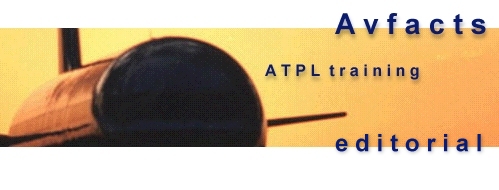




 |
 |
  |
 |
Aircraft Flight Planning Topic 7.
Fuel Exhaustion - The wind trap
|
General:
It is a matter of history that most light aircraft engine failures in-flight are caused by fuel exhaustion. This is something that a professionally minded pilot should NOT be guilty of. Basically, if you have sufficient fuel in the tanks, your chances of having an engine failure are about halved. In this editorial we will demonstrate how winds can effect your aircraft range, and safety. Every day thousands of aircraft world-wide set out on charter or private flights that involve an out and back journey on the same day. Pilots often carry the same fuel for each of these specific sectors, irrespective of the wind that is forecast (ie: a standard fuel policy for that sector). This simplifies fuel calculations but can result in fuel exhaustion and engine failure. Example: A routine out and back charter flight is conducted to a gold mine every day. Fuel is NOT available at the mine site. Sector lengths 360 nm each way. TAS 120 kt. Day 1 Conditions Nil wind. The pilot loads on the amount of fuel required for the flight (360 minutes) plus 100 minutes total reserves. Total fuel on board is 460 minutes Day 2 The flight is forecast to experience strong tailwind conditions on the outbound journey. The pilot reckons that the longer flight time home due to the headwind will be exactly countered by the increased groundspeed experienced on the outbound leg, and carries enough total fuel for a nil wind day (ie: 460 minutes). Day 2 Data: Tail wind OUT 60 kt. Head wind HOME 60 kt. The journey OUT takes less time than usual with the groundspeed of 180 kt producing a flight time of only 120 minutes. The groundspeed HOME is reduced to only 60 kt, giving a flight time HOME of 360 minutes. Total OUT and HOME “flight fuel” on day 2 is 480 minutes. The aircraft will suffer fuel exhaustion 20 minutes before arriving HOME.
I hope that this mini training editorial helps you in your studies. Further Airline Pilot training texts such as these are available at most pilot supply shops around Australia, or through the secure ONLINE SHOP at this website for those of you with plastic money. A list of approved distributors is available within the Avfacts site. ATPL training course information is also available within the Avfacts website. Best Wishes Rob Avery
|
![]()